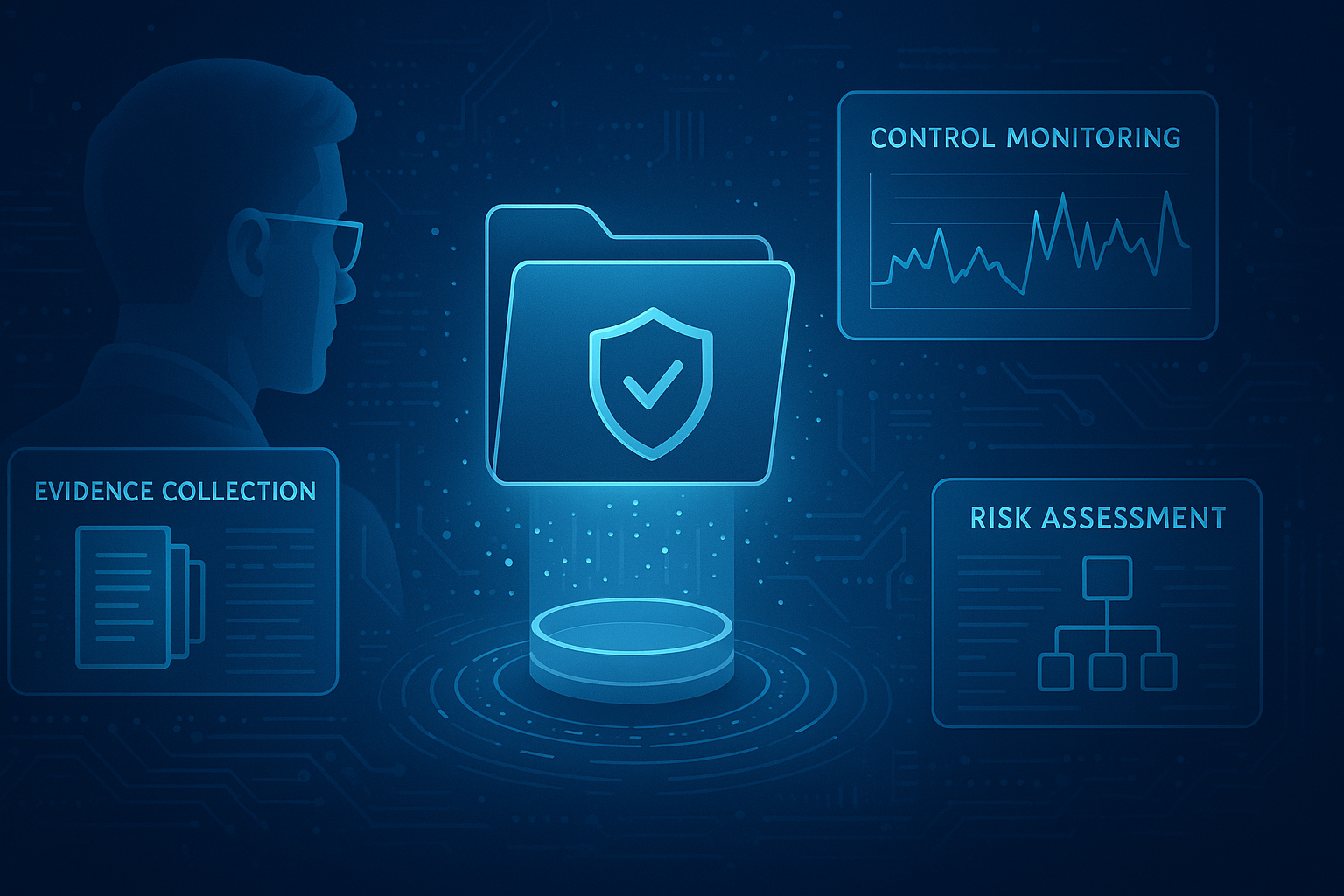You can’t consider cybersecurity without considering risk management. Historically, analyst firms turned away from risk management, but it’s a missed opportunity for maximizing cybersecurity operations. Business teams must understand the impact of cyber threats and vulnerabilities on the bottom line.
Cyber risk management comprises many facets: financial risk opportunity, third-party risks, supply chain risk, etc. Legacy approaches to risk management developed in a fractured manner. As the industry evolved, new threats developed, and companies deployed solutions ad hoc. It’s safe to say that IT and cyber are mature industries where most risks and trends are known, and developing trends can be spotted in real time. The scale of cyber operations has grown, and now security teams need to find solutions to fit this growth. Considering the siloed nature of GRC tools, this fragmented approach cannot scale to meet the needs of all cyber risk operations.
Rise of Cyber Risk Management Platforms
Cyber risk management involves operational risk, risk resilience, CRM, and GRC objectives. GRC has not fallen off the radar; the core facets of GRC have been restructured within cyber risk management to fit a proactive and holistic approach to cybersecurity. Cyber risk management operations recognize the interplay between governance, risk management, and compliance.
End-point solutions are insufficient, and the market is shifting its focus towards platforms and programs. Modern cybersecurity risk management programs must have these critical defining features: flexibility, scalability, comprehensiveness, and automation. An efficient cyber risk program is built on the understanding that cyber can impact every aspect of the business and can support operations from risk assessment to the Boardroom. Cybersecurity teams are responsible for identifying and protecting companies from threats. They are now also responsible for doing so at the control level. This involves identifying the risks of each control, managing the risks, remediating them, and learning how to be resilient from them.
If you cannot tie your threats and vulnerabilities back to controls, there’s no context by which you can prioritize risk.
New solutions are focused on adding visibility to control and risk data. It’s not just about harmonizing controls for efficiency or effectiveness. Security leaders want to understand and evaluate how risk operations are conducted. This level of transparency is vital for security leaders and CISOs when they have to report to Board leaders and executives. This reinforces two aspects: accountability and informed decision-making.
Keeping Pace with Innovation
Digital risk focuses on how technology manifests in new digital products and services companies seek for future growth. According to Gartner's research, CEOs need to understand the new digital products and services that their organizations are rolling out. It's not intuitive to them, and that's different from their business mindset.
The complexity grows as technology assets and platforms combine or integrate in ways they may not have been designed to integrate. So, the risk managers, the security managers, and the compliance managers have to keep pace with this technological development because it will be the root of every business. And if they can keep pace with it, the organization will succeed. It's as simple as that.
Critical Components of Cyber Risk Management Programs
Here are essential components of cyber risk management to consider.
|
Component |
Description |
|
Governance |
Governance involves establishing a clear structure and set of roles and responsibilities for cybersecurity within the organization. A senior leader, like a CISO or CIO, is accountable for cybersecurity and risk management operations. |
|
Cybersecurity Risk Assessment |
Risk assessments involve identifying and analyzing the cyber risks that the organization faces. This process includes considering the organization's assets, threats, and vulnerabilities. Risks are prioritized based on their severity and potential consequences. |
|
Risk Mitigation & Controls |
Once risks have been identified and assessed, the organization must decide how to treat them. To reduce or mitigate identified risks, the organization must develop and implement cybersecurity controls. It should also implement security best practices and industry standards, such as the NIST CSF or ISO 27001. |
|
Security Awareness & Training |
Cyber training involves educating employees about cybersecurity best practices and developing threat trends relevant to the industry or company. |
|
Incident Response Planning |
Develop an incident response plan that outlines how the organization will respond to cybersecurity incidents. Establish a chain of command, communication protocols, and procedures for reporting and responding to incidents. |
|
Vendor & Third-Party Risk Management |
Evaluate and manage the cybersecurity risks associated with third-party vendors and partners. Ensure that vendors adhere to security standards and guidelines. |
|
Data Protection & Privacy |
Implement data protection measures such as encryption, access controls, and data classification to safeguard sensitive information. Comply with data protection regulations like GDPR or HIPAA that may apply to your organization. |
|
Risk Communication |
Establish clear channels of communication for reporting security incidents and risks. Share information about cybersecurity risks and incidents with Boards and stakeholders. |
|
Executive Reporting |
Ensure that senior management and the Board of Directors are actively engaged in cybersecurity risk management and are aware of the organization's cybersecurity posture. Leverage Board meetings to engage with leaders and educate them on potential risks and their impact so that they can make risk-informed decisions and investments. |
|
Continuous Monitoring & Improvement |
Leverage automated solutions that continuously monitor control changes to assess and mitigate risks in real-time. |
|
Testing and Simulation |
Testing involves regularly testing the organization's security controls to ensure effectiveness. Conduct penetration testing, vulnerability assessments, and tabletop exercises to identify weaknesses in your cybersecurity defenses and response procedures. |
Modern cyber risk management strategies must consider many aspects. Select a cybersecurity solution that can guide your organization in building a comprehensive program and adapting to your organization’s size, maturity, and industry requirements.
This webinar offers more insights into the evolution of risk management programs. Schedule a conversation with CyberSaint to learn about our unique cyber risk management program and how we support every step of cyber operations with CyberStrong.





.png)
.png)
.png)
%201.png)
.png)




